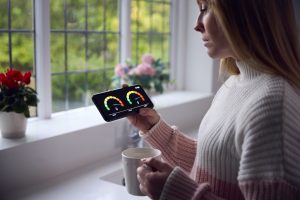GRC or Glass Reinforced Concrete cladding panels are a popular choice for high-rise buildings due to their durability, strength, and aesthetic appeal. They are made of a composite material consisting of cement, fine aggregates, water, and alkali-resistant glass fibers. This type of cladding offers several benefits, including low maintenance, excellent insulation, and a long lifespan. In this guide, we will take a closer look at GRC cladding panels for high-rise buildings, their advantages, and some considerations for their installation.
Advantages of GRC Cladding Panels
GRC cladding panels have numerous benefits, making them a popular choice for high-rise buildings. Some of the advantages of GRC cladding panels include:
- Durability: GRC cladding panels are highly durable and can withstand harsh weather conditions such as heavy rain, wind, and snow. They are also resistant to fire, impact, and chemical damage.
- Lightweight: GRC cladding panels are lightweight, making them easy to install and handle. This is particularly beneficial for high-rise buildings where heavy materials can add extra weight and put additional stress on the structure.
- Aesthetically pleasing: GRC cladding panels are available in a wide range of colors, textures, and finishes, making them a versatile choice for architects and builders. They can be molded into different shapes and designs, allowing for unique and customized facades.
- Low maintenance: GRC cladding panels require minimal maintenance and can last for decades without the need for repair or replacement. They are also resistant to mold, mildew, and bacteria, making them an ideal choice for high-humidity environments.
Considerations for GRC Cladding Panel Installation
While GRC cladding panels offer several benefits, there are some considerations to keep in mind when installing them on high-rise buildings. These include:
- Installation by experts: GRC cladding panels require specialized knowledge and skills for installation. It is essential to work with experienced professionals who have the expertise and equipment to handle the installation process.
- Structural considerations: GRC cladding panels are lightweight, but they still require proper support and structural integrity. It is essential to ensure that the building’s structure can handle the weight of the cladding panels.
- Weatherproofing: Proper weatherproofing is crucial for GRC cladding panel installation. It is important to use the correct sealants, joints, and flashings to prevent water infiltration and damage.
- Maintenance: While GRC cladding panels require minimal maintenance, regular inspections and cleaning are still necessary to ensure their longevity and performance. It is also essential to address any damage or issues promptly to prevent further damage to the cladding and the building.
GRC Cladding Panel Installation Process
The installation process for GRC cladding panels typically involves the following steps:
- Design and planning: The first step is to design and plan the cladding system. This involves selecting the appropriate materials, colors, textures, and finishes, as well as determining the layout and dimensions of the panels.
- Site preparation: The installation site must be prepared by ensuring that the substrate is clean, dry, and level. Any surface defects or irregularities must be corrected before installation.
- Fixing of the support system: The support system is then fixed to the building’s structure. This includes the installation of brackets, channels, and rails, which will support the cladding panels.
- Panel installation: The GRC cladding panels are then installed onto the support system. This involves fixing the panels to the support rails or channels using appropriate fixings such as stainless steel screws, bolts, or clips. The panels are typically installed horizontally, but they can also be installed vertically or diagonally depending on the design.
- Sealing and finishing: Once the panels are installed, sealants, joints, and flashings are used to weatherproof the installation. This prevents water infiltration and damage to the cladding and the building’s structure. The finishing touches, such as the installation of trims and moldings, are then added to complete the installation.
In summary
GRC cladding panels are an excellent choice for high-rise buildings due to their durability, strength, and aesthetic appeal. They offer several benefits, including low maintenance, excellent insulation, and a long lifespan. However, proper installation and maintenance are essential to ensure their longevity and performance. It is crucial to work with experienced professionals who have the expertise and equipment to handle the installation process. Regular inspections and cleaning are also necessary to prevent damage and ensure the cladding panels’ longevity. By following these guidelines, GRC cladding panels can provide a sustainable and long-lasting solution for high-rise building facades





